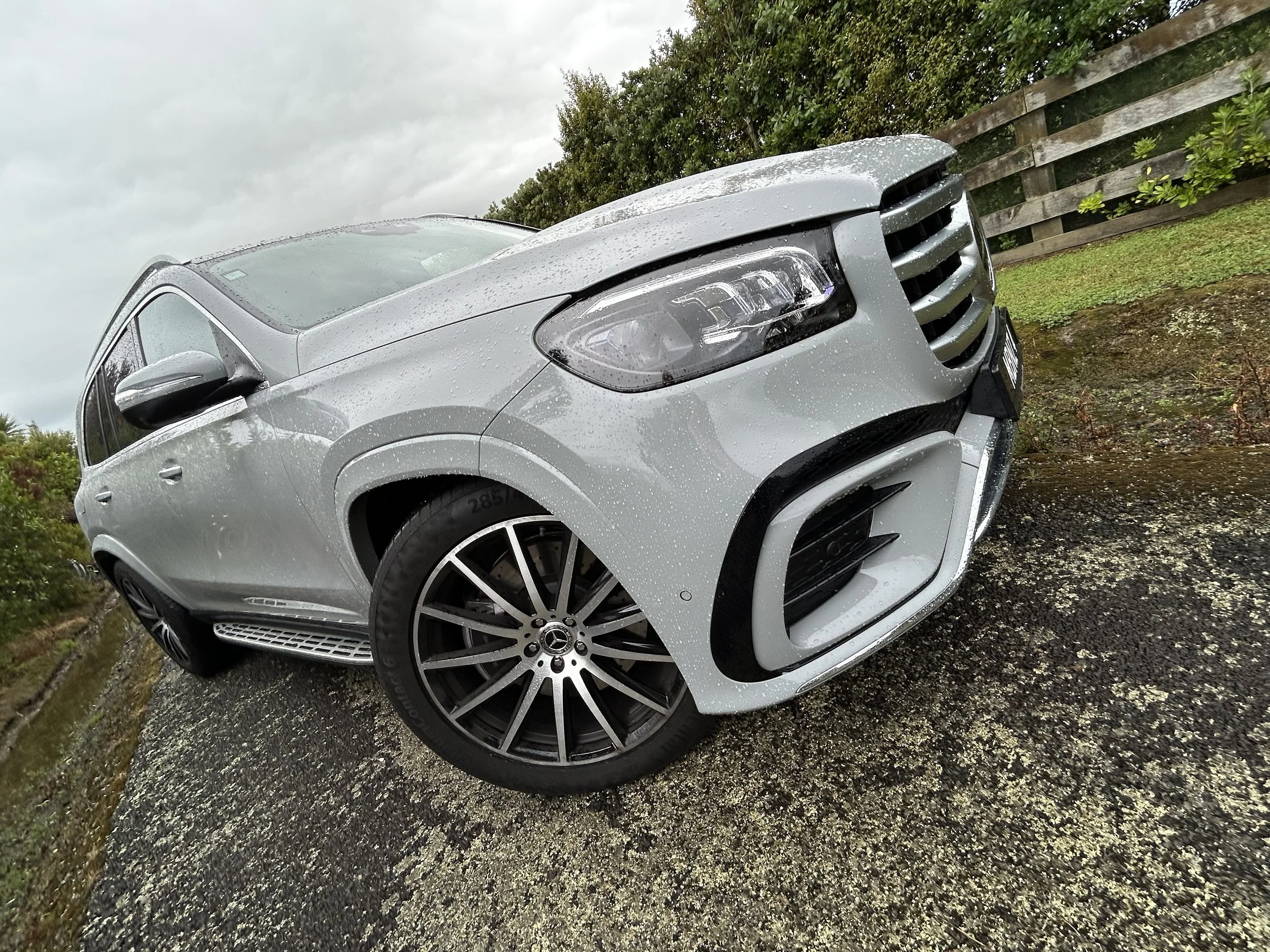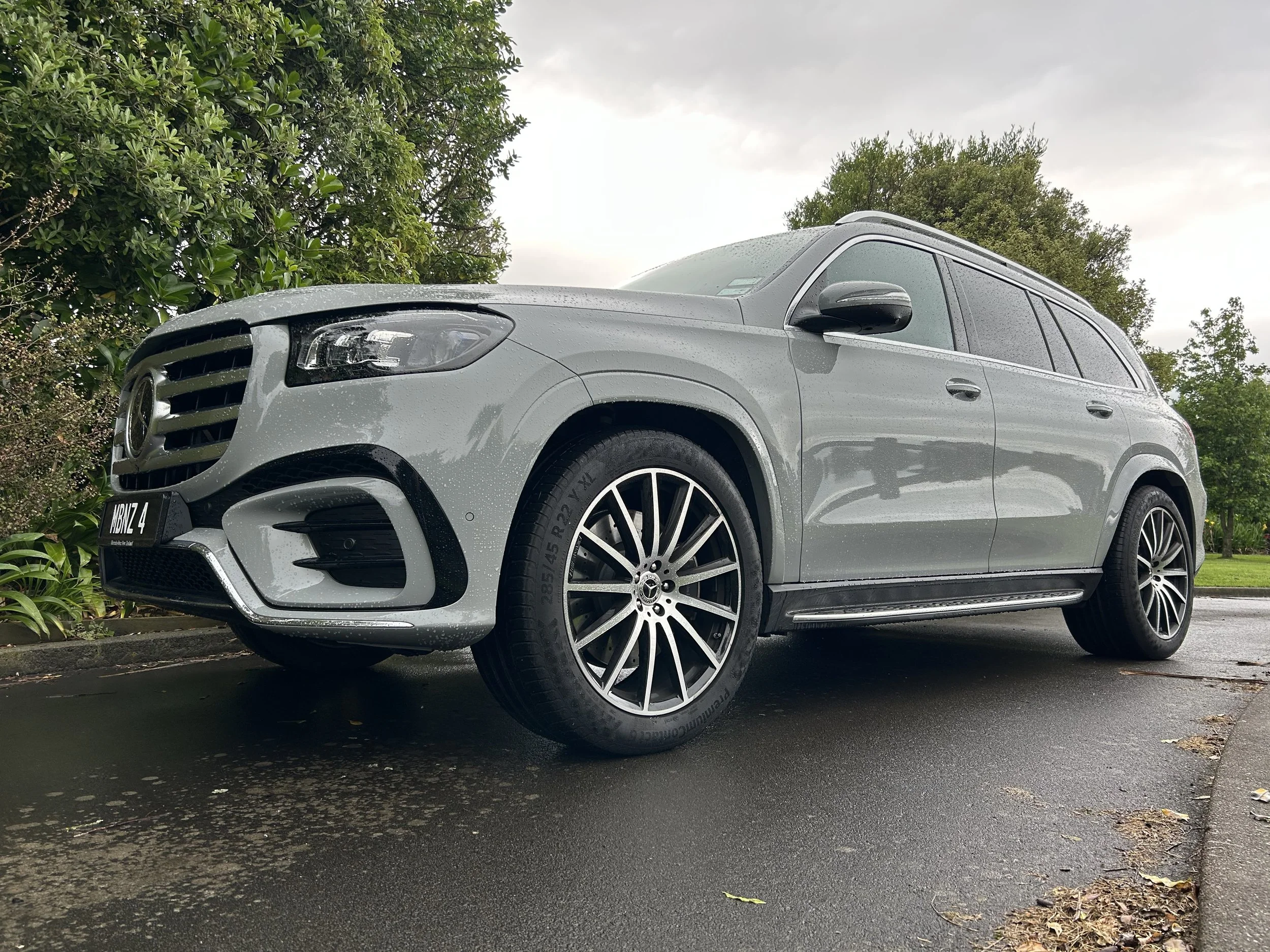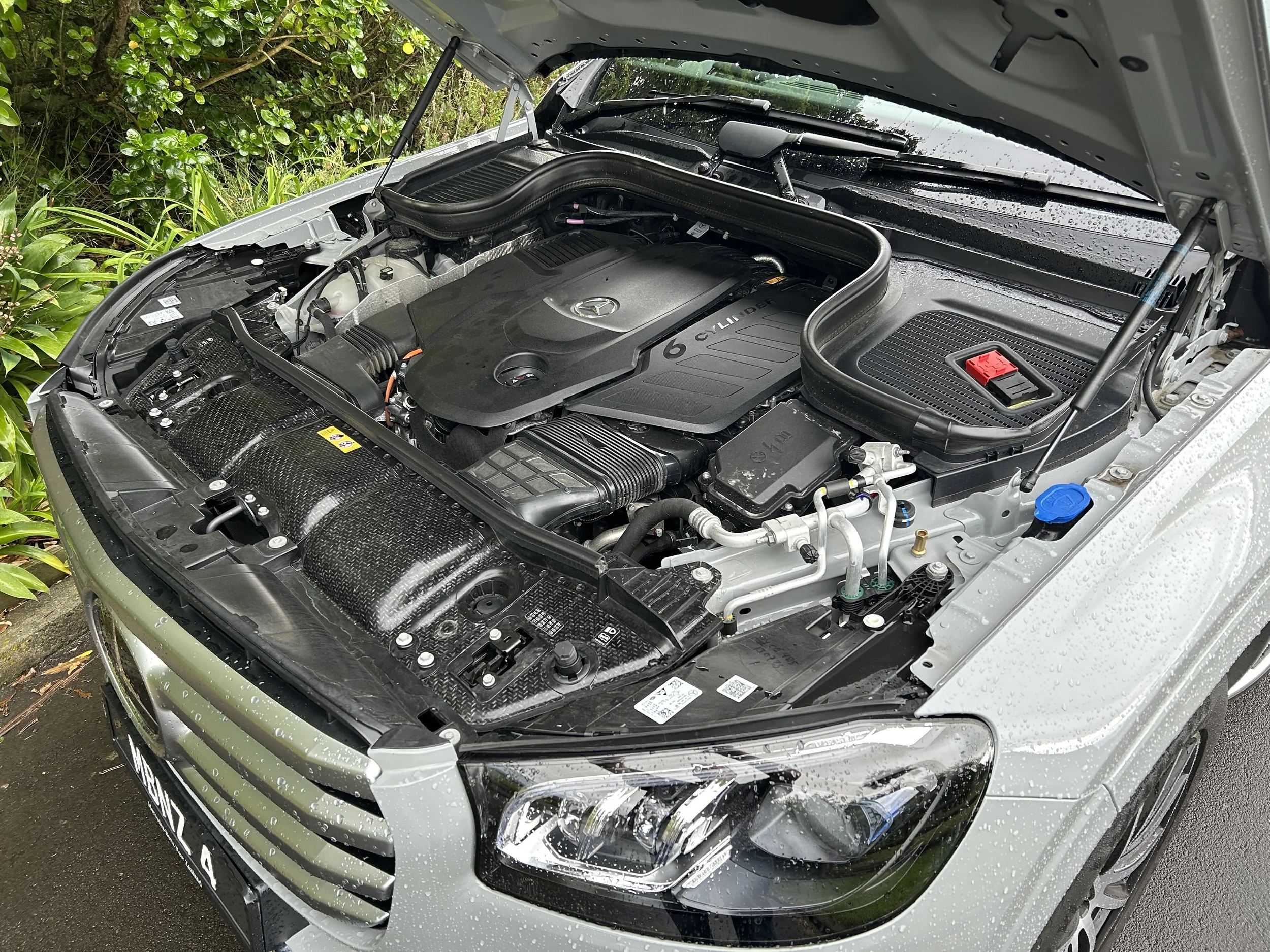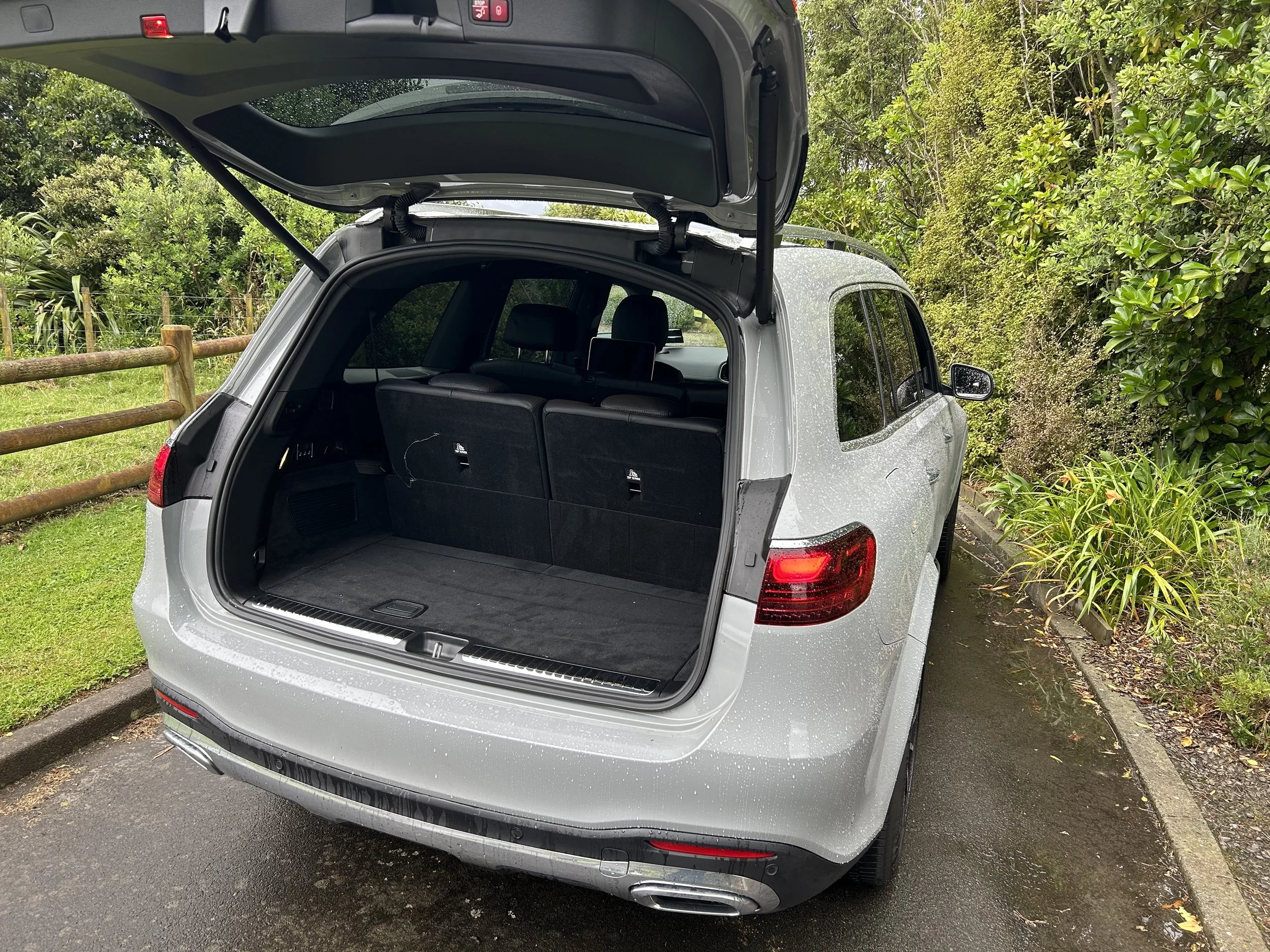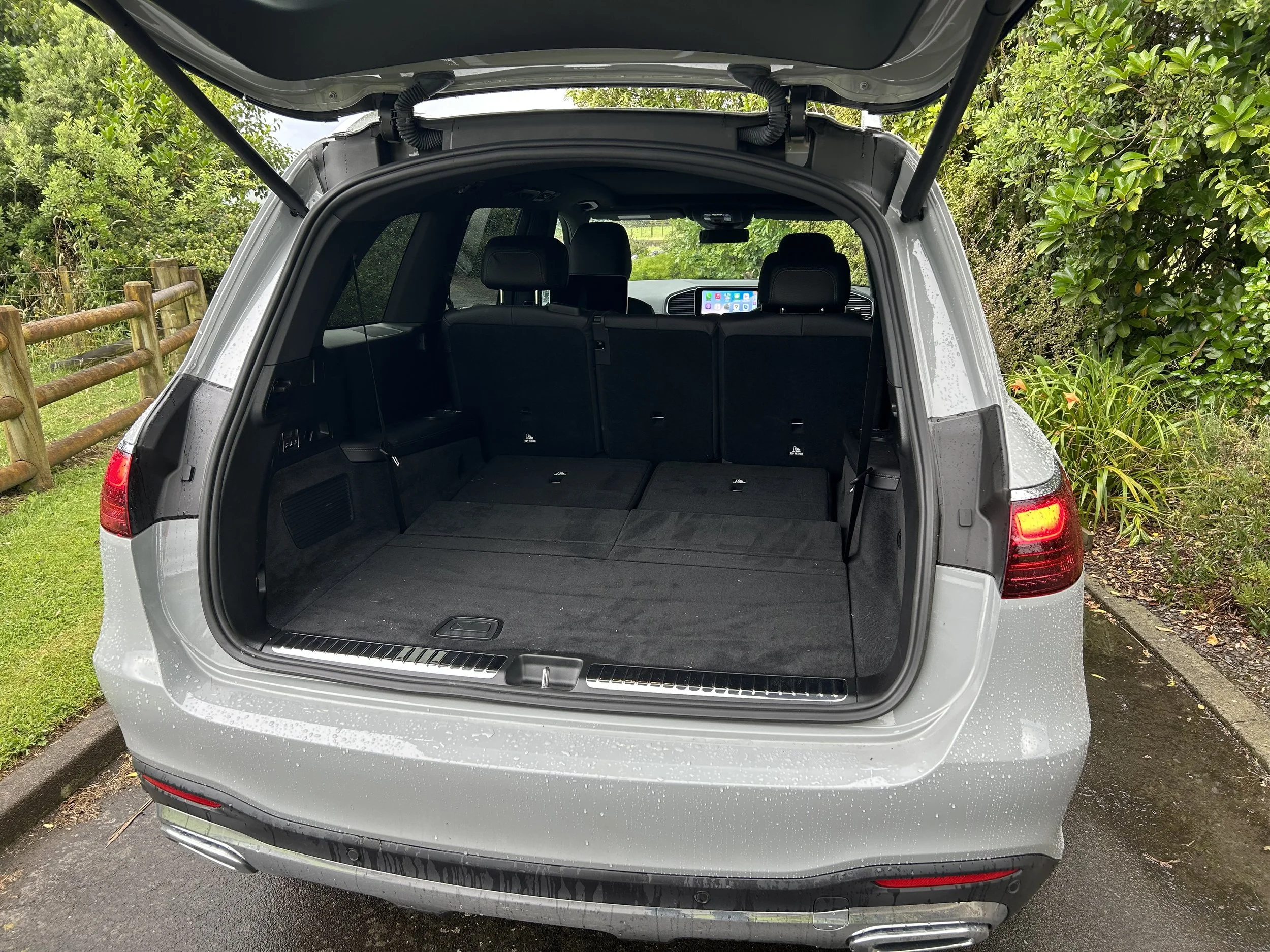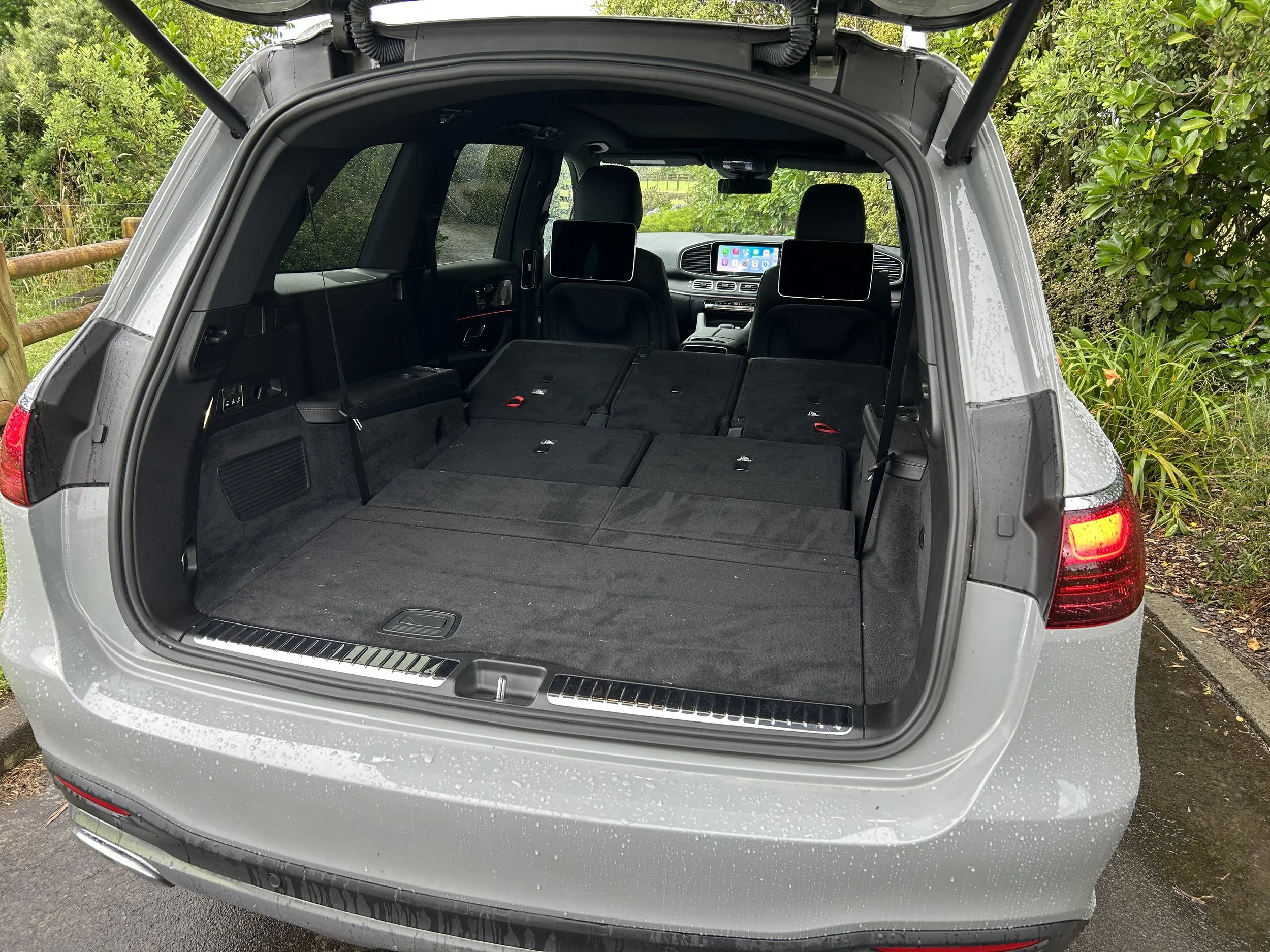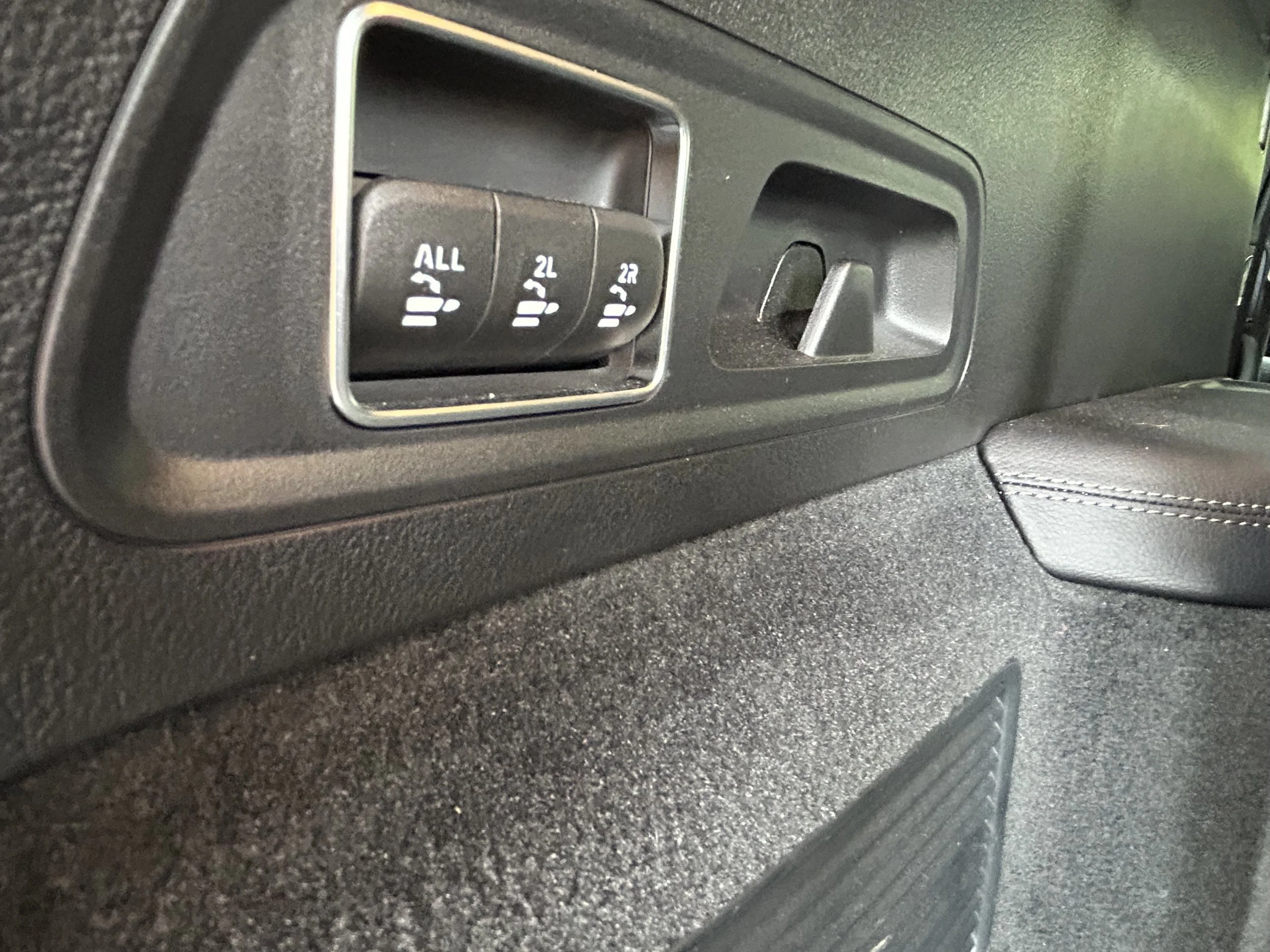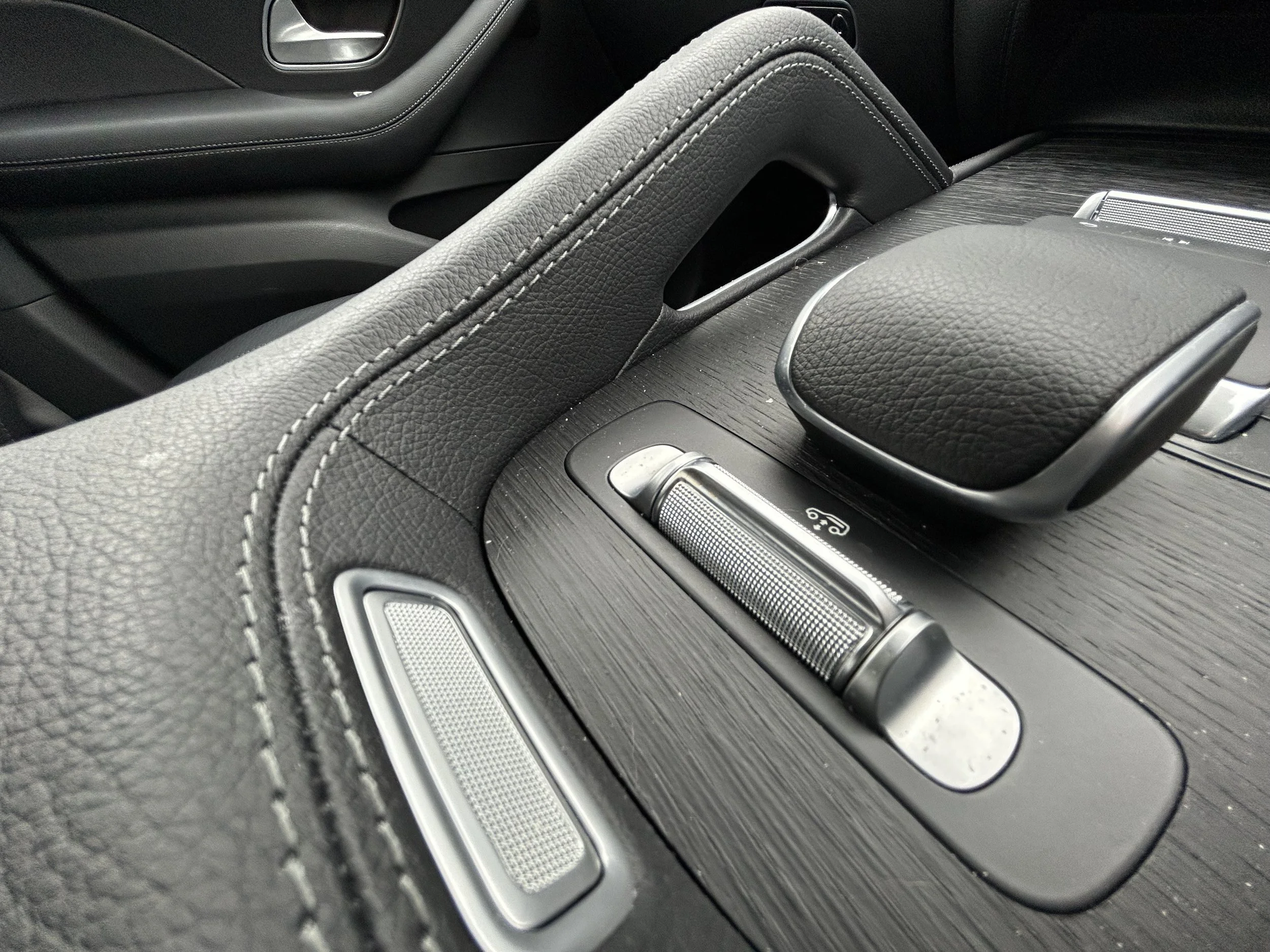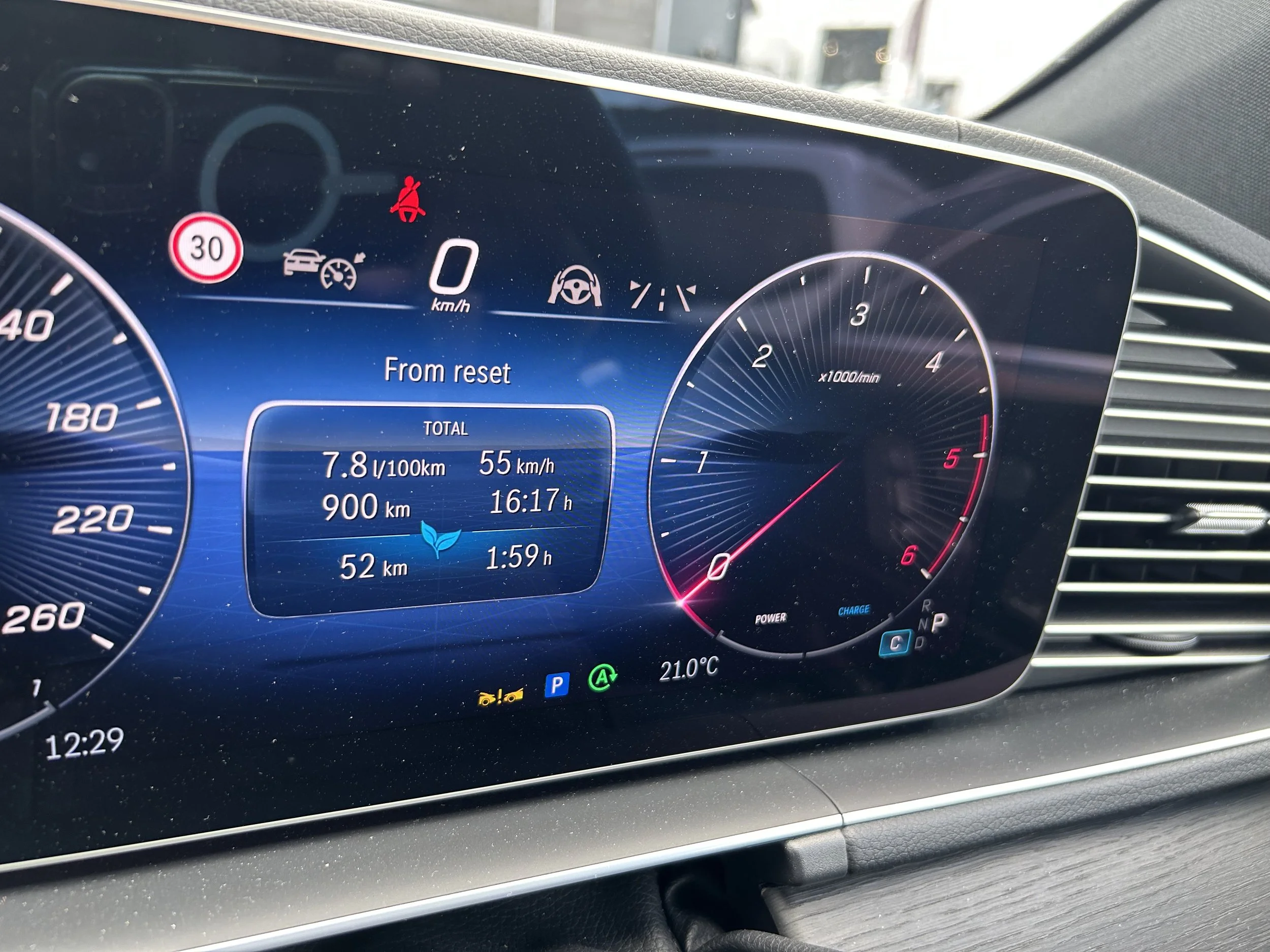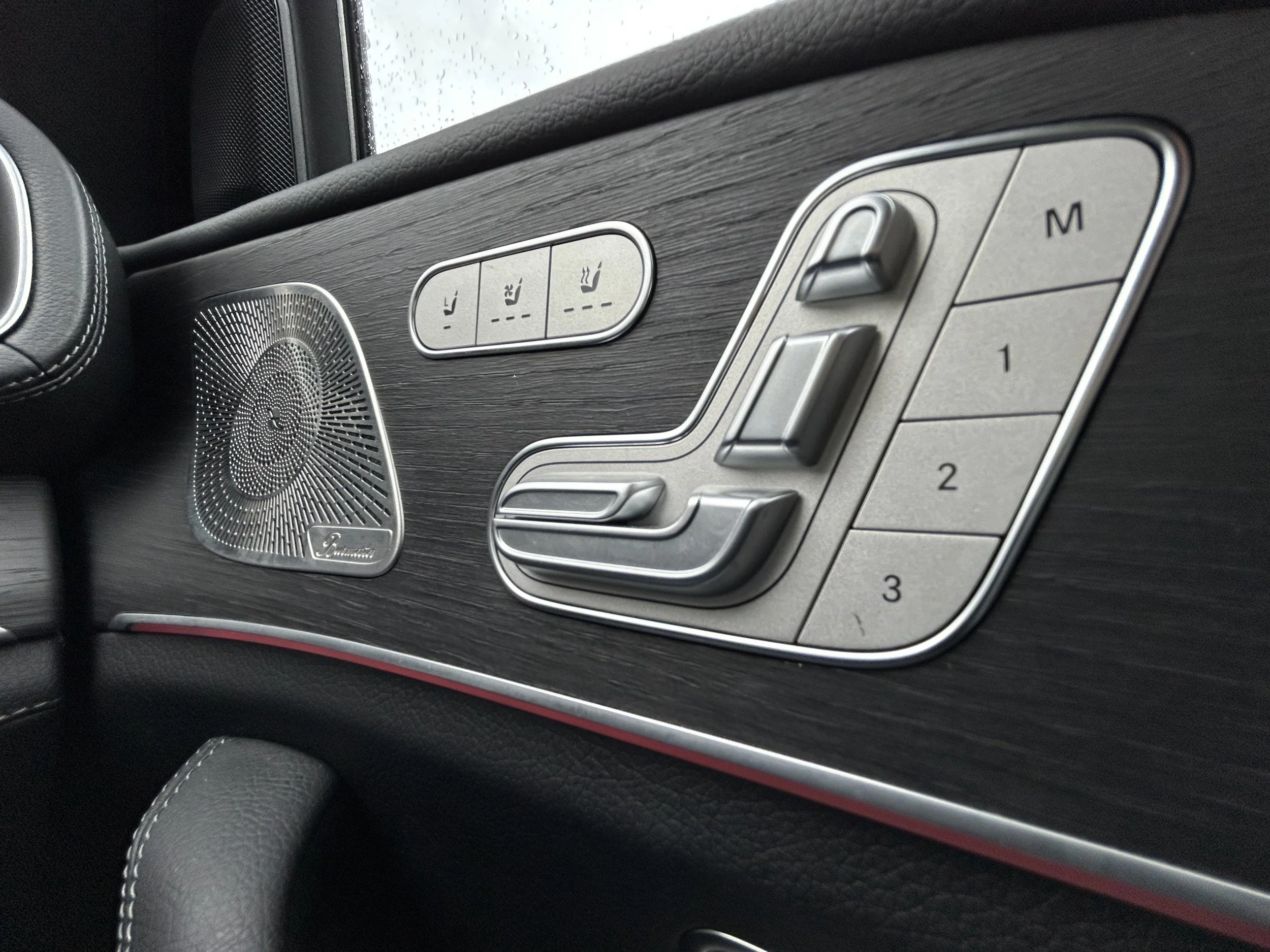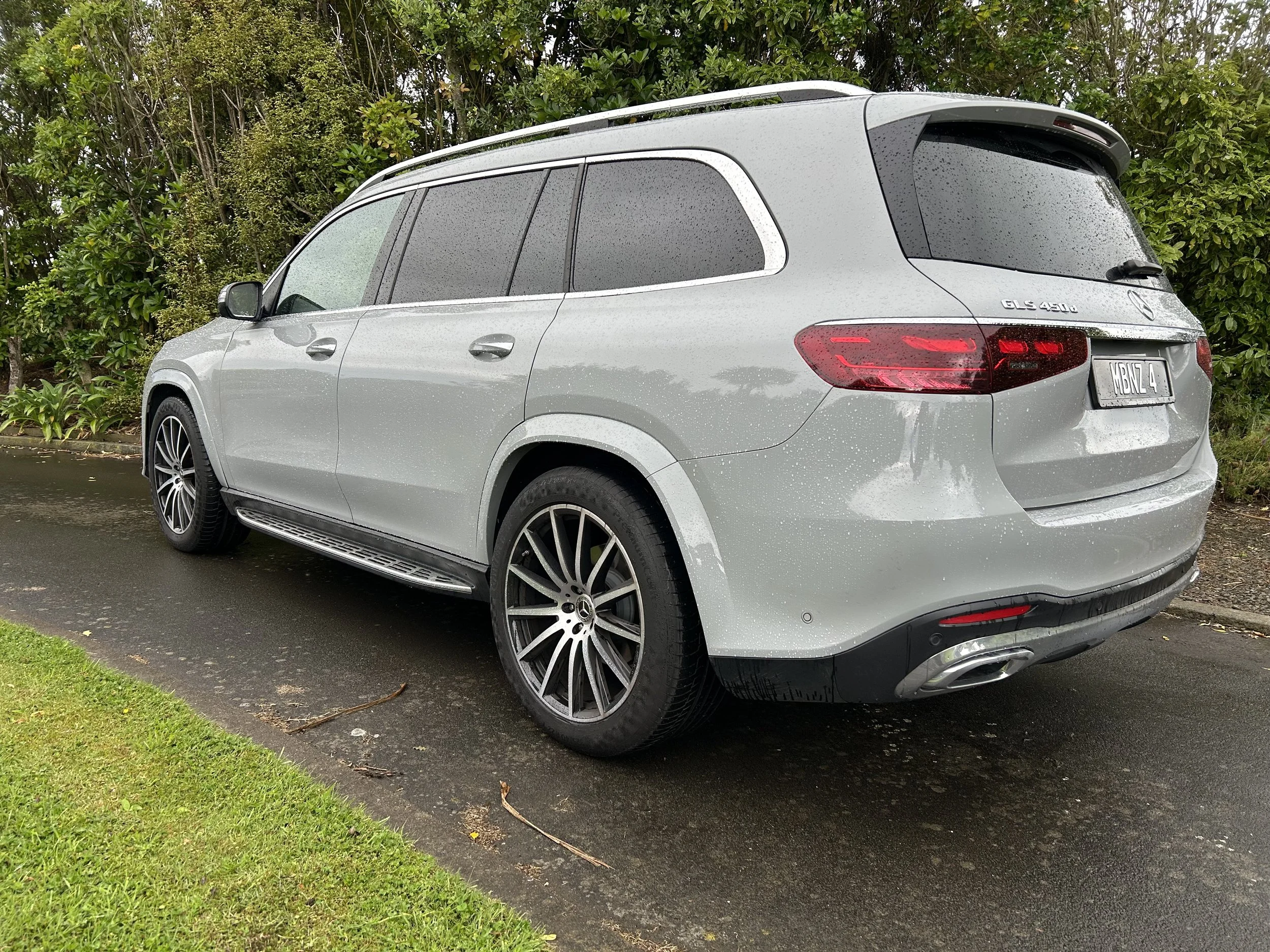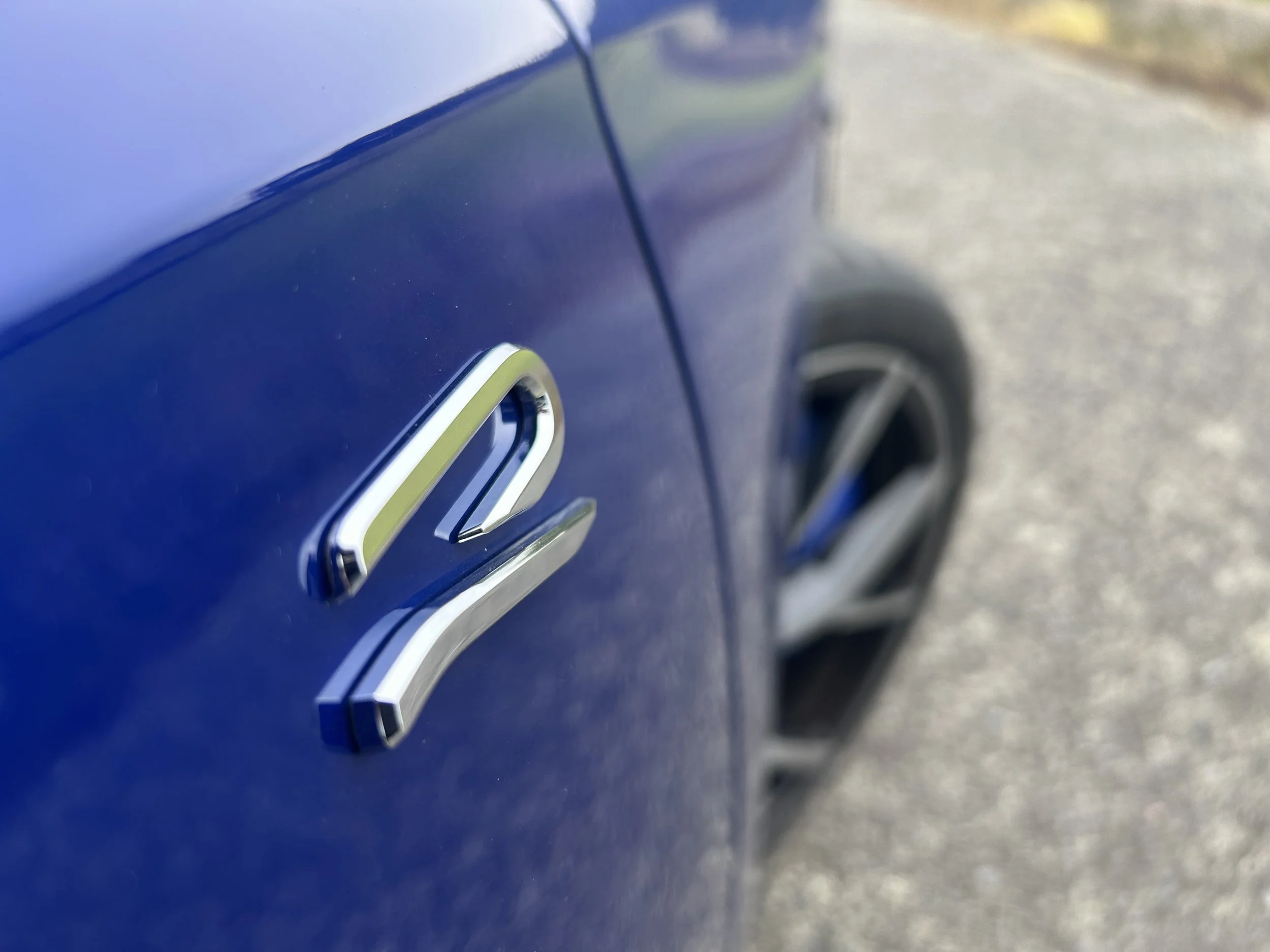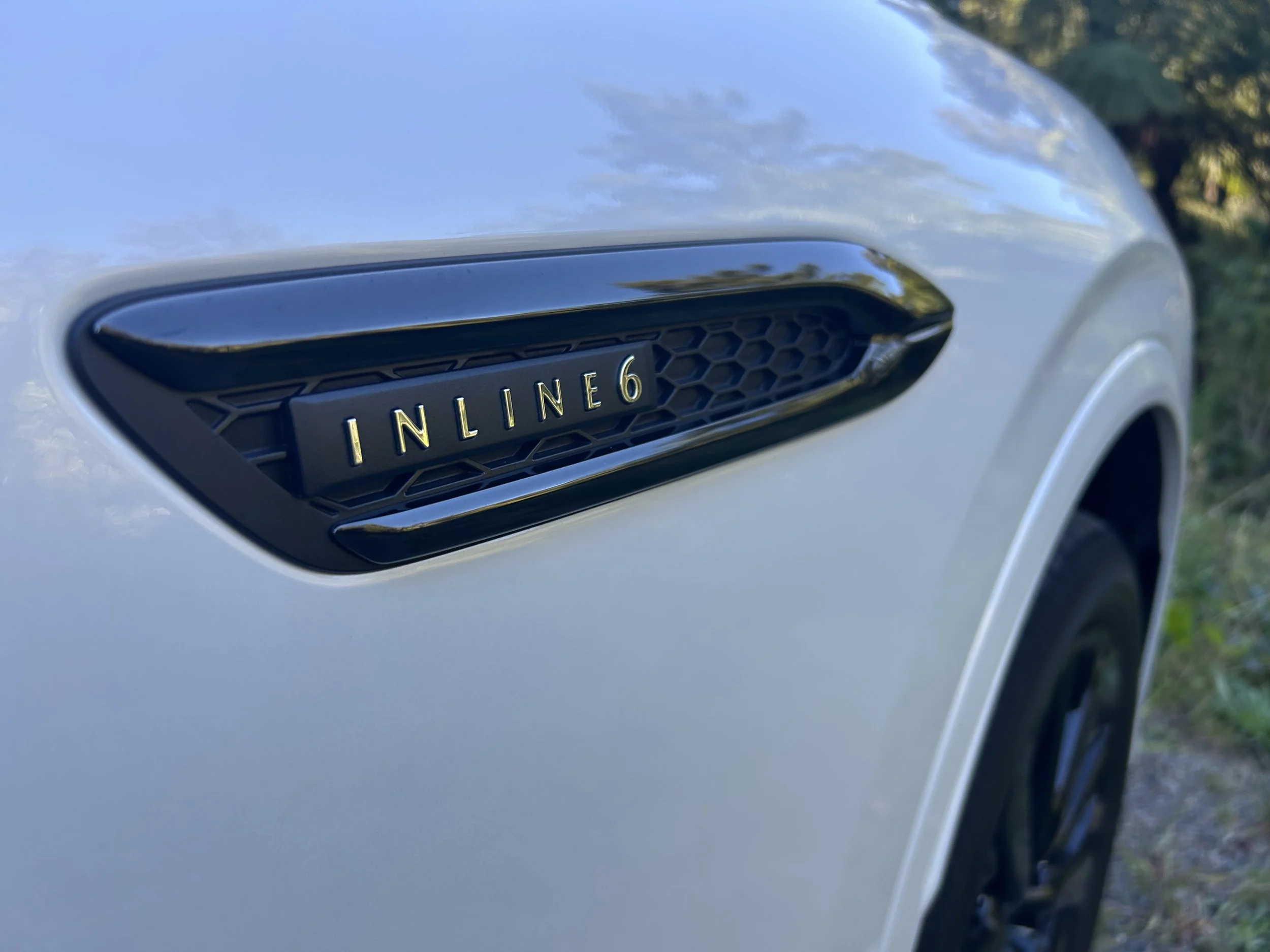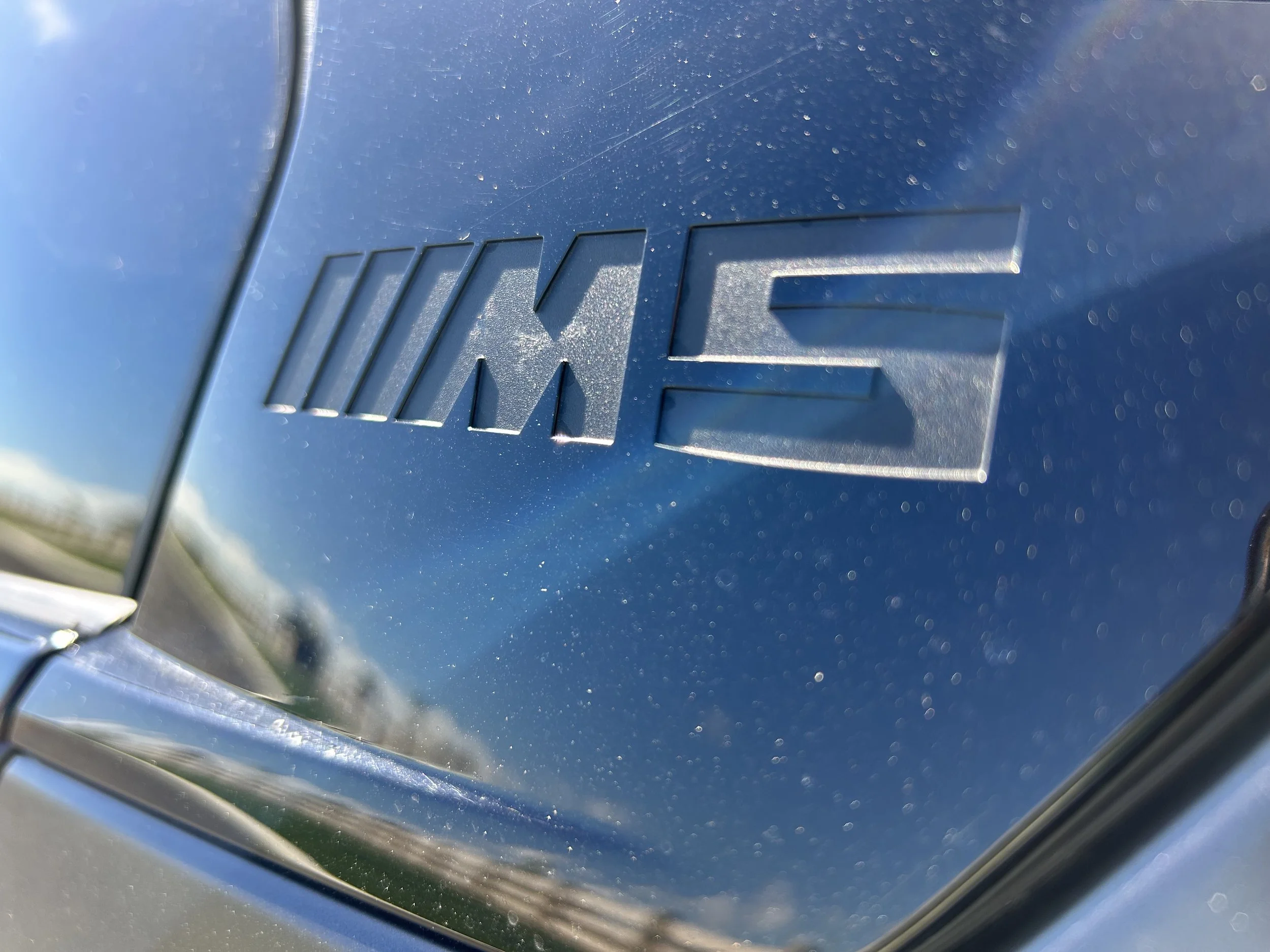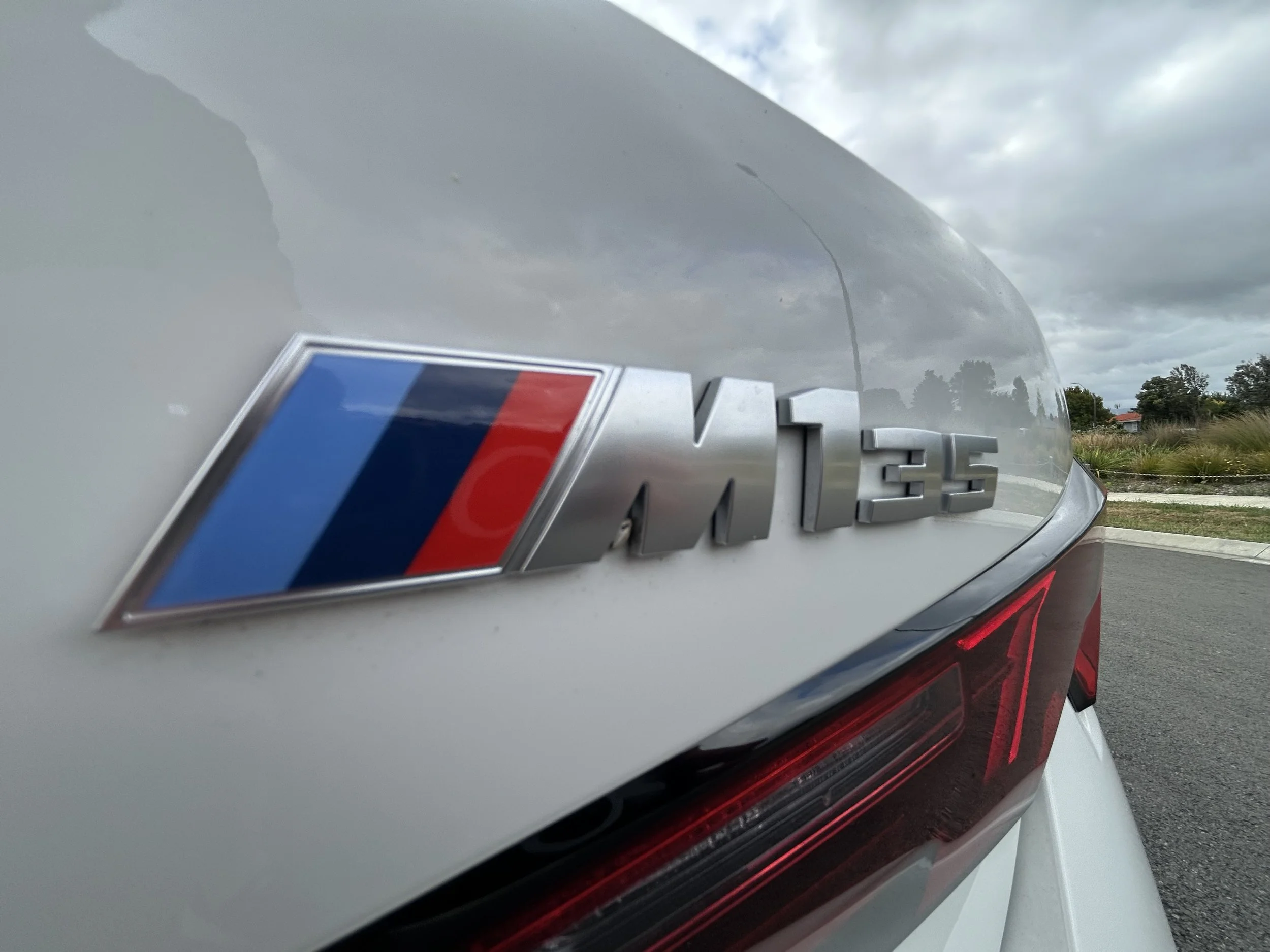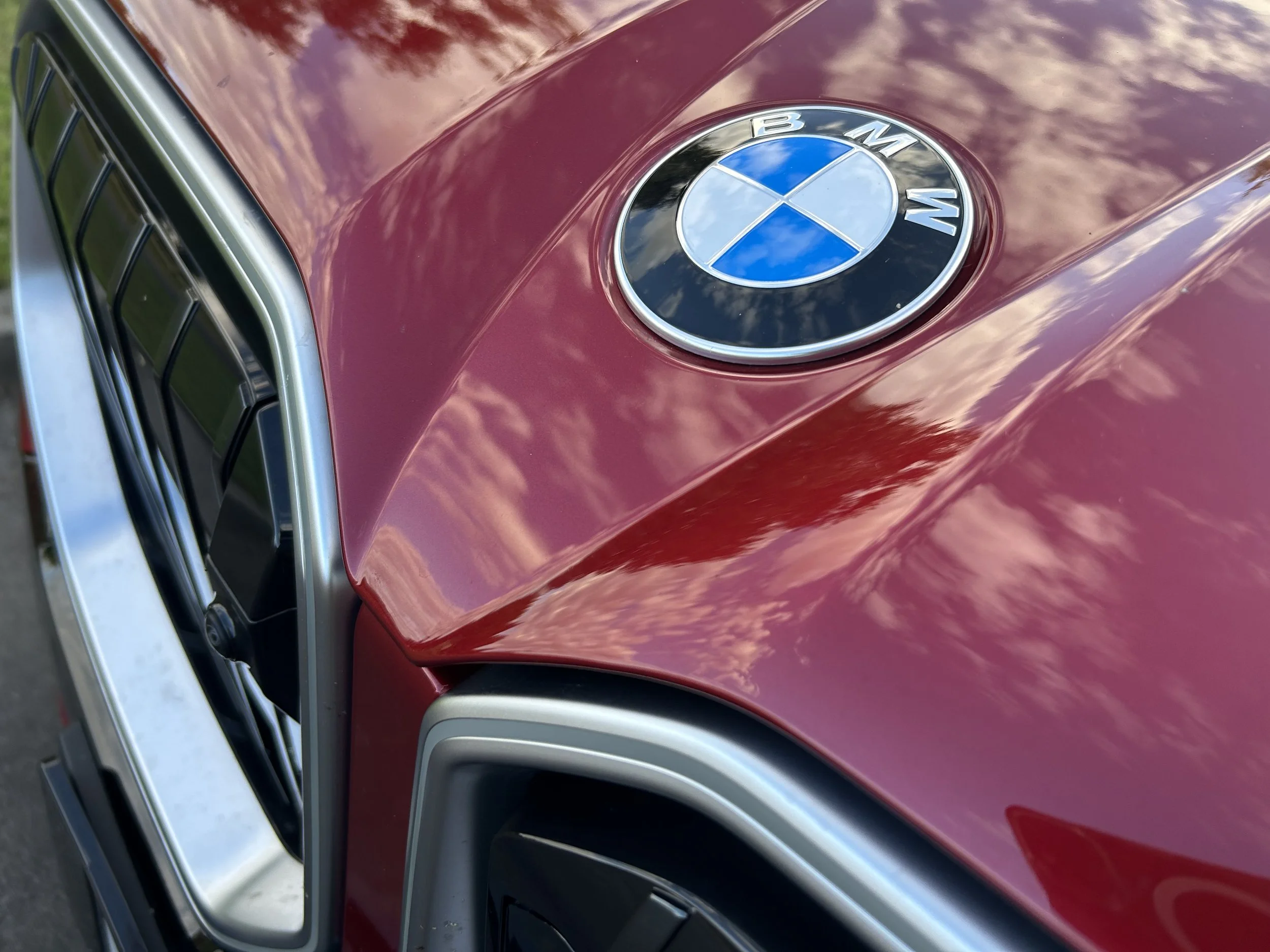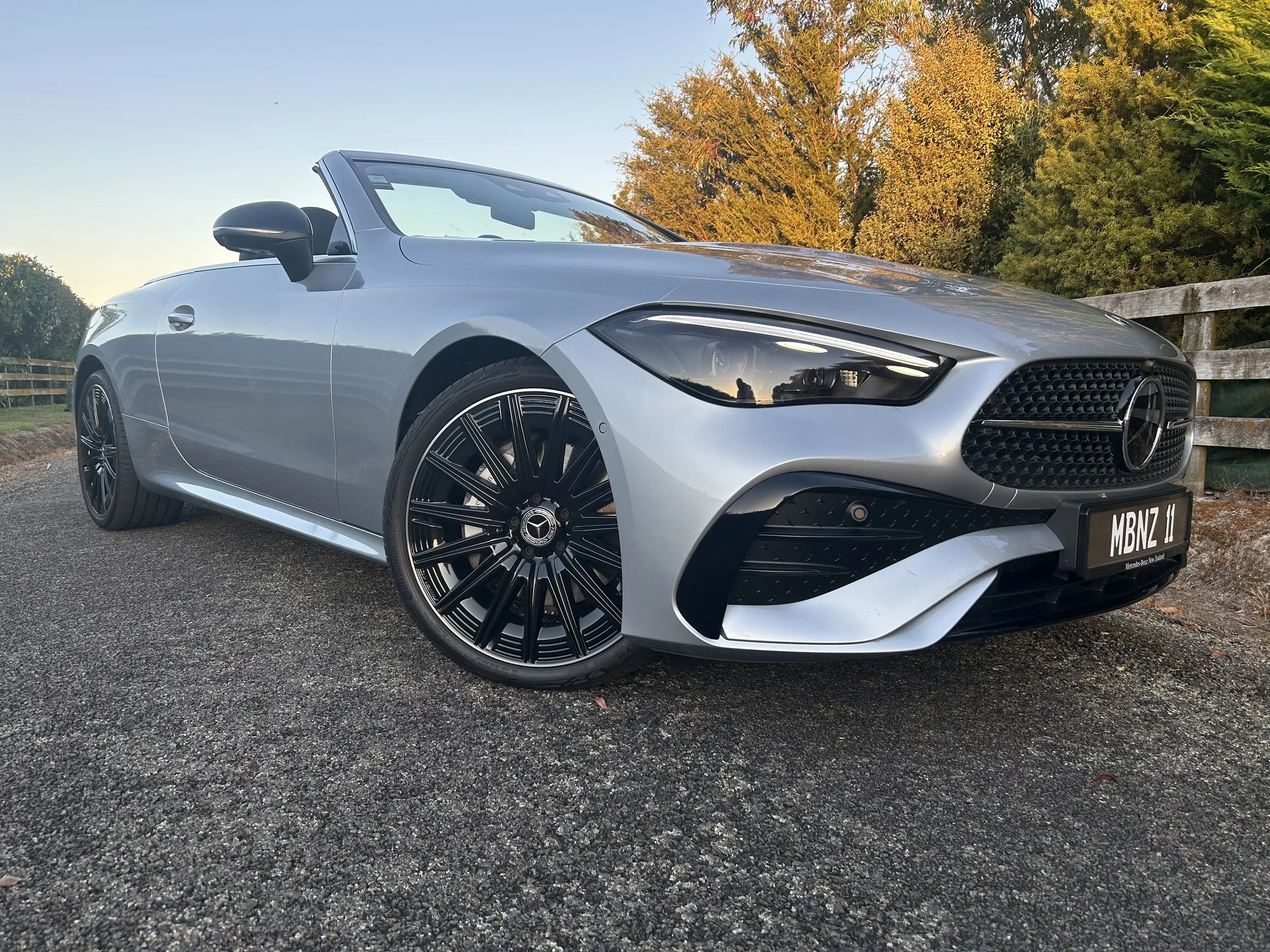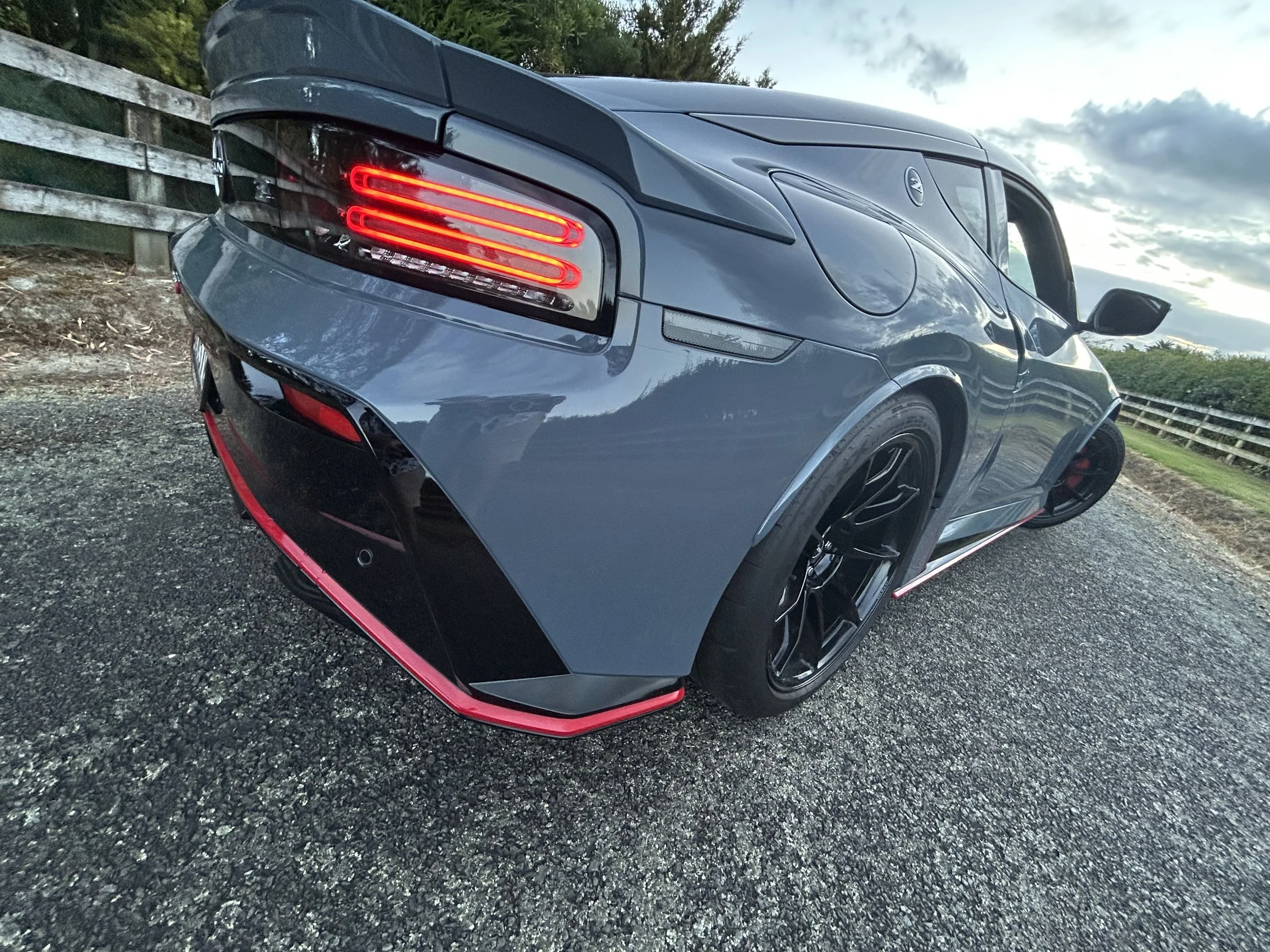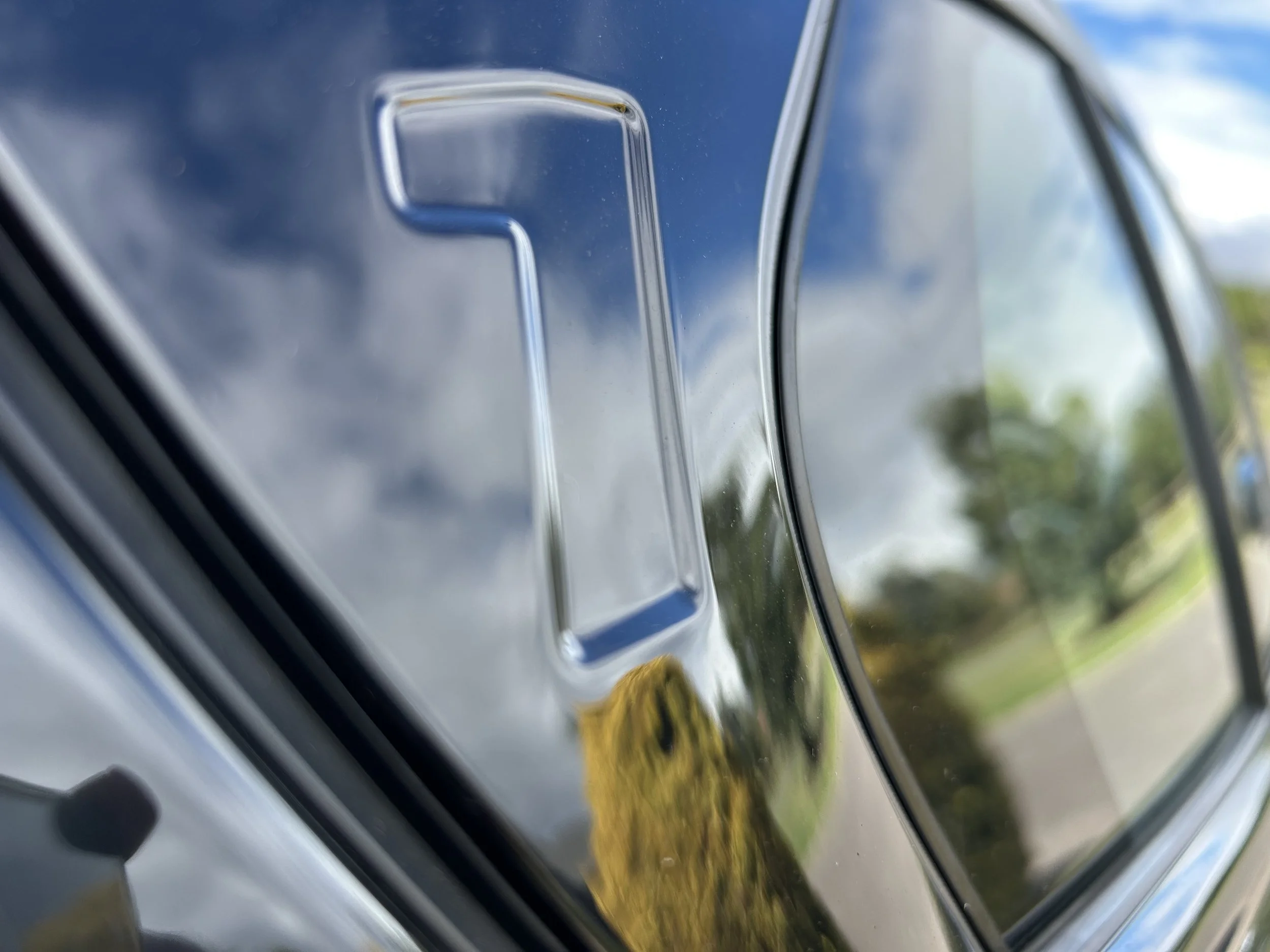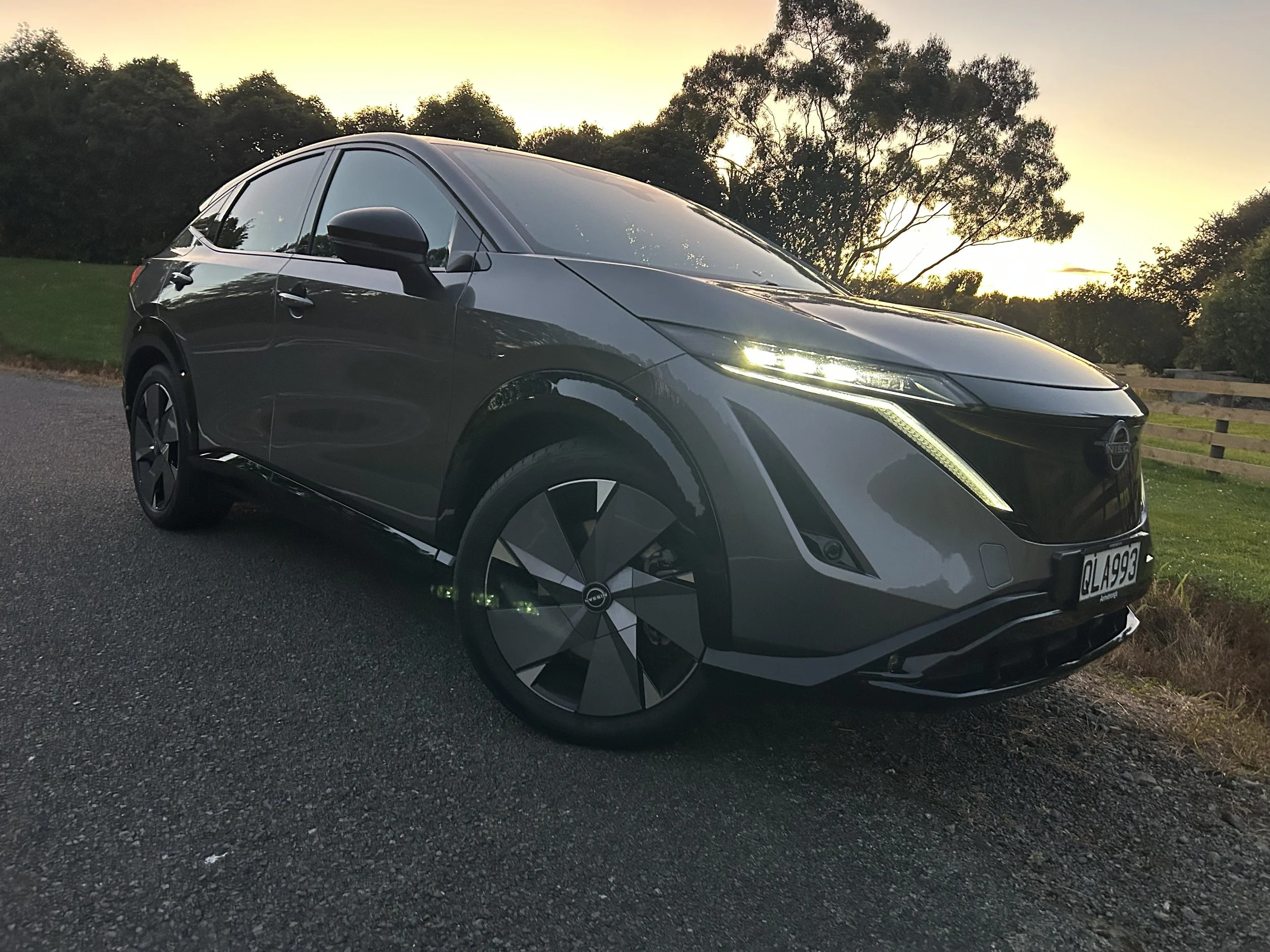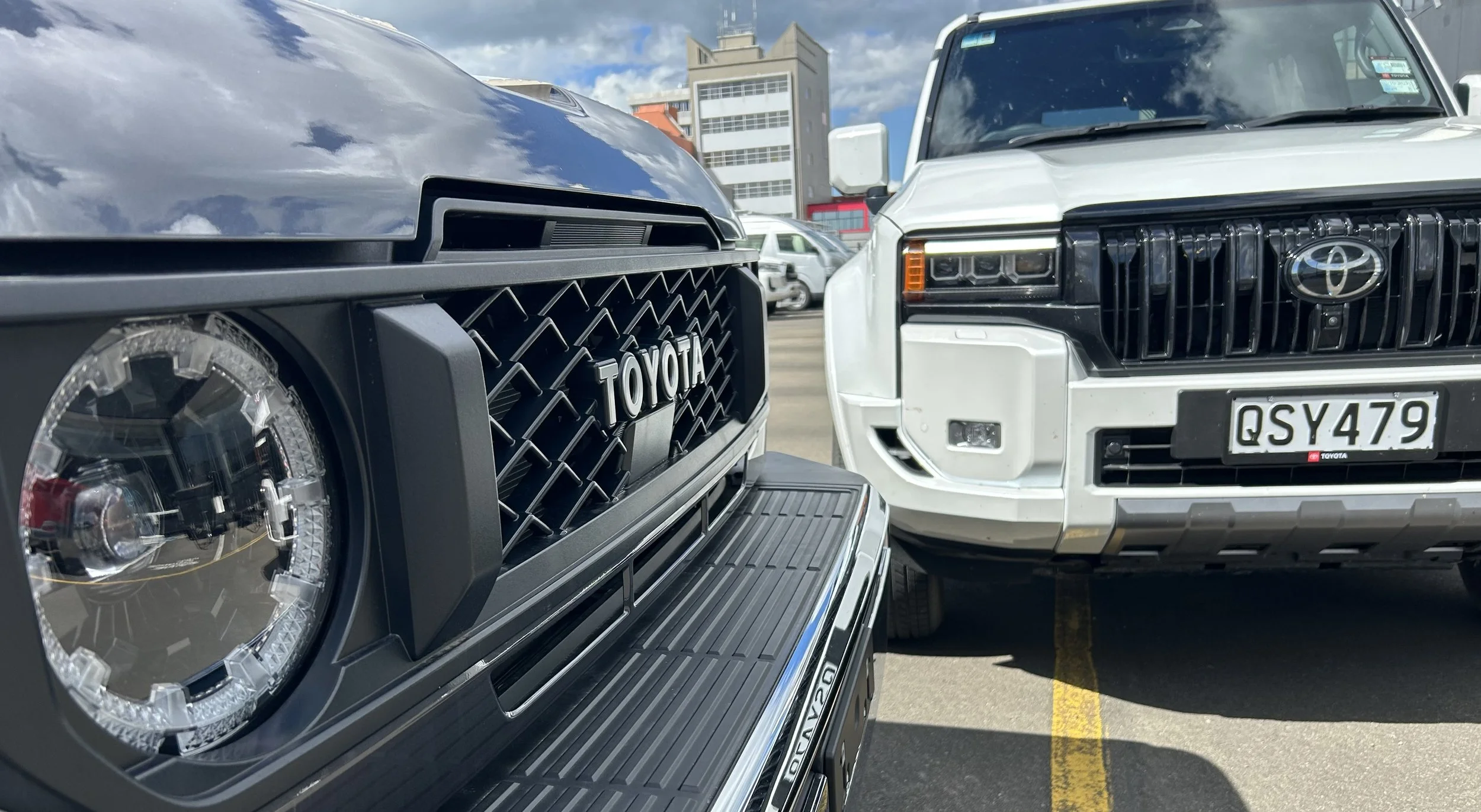Mercedes-Benz GLS 450d: Highest command
/The largest SUV starship has been gifted some aesthetic enhancements - and a new, if familiar engine.
Price: $194,200
Powertrain: 2989cc six cylinder turbodiesel, 270kW/750Nm, nine speed automatic.
How big: 5209mm long, 2157mm wide, 1823mm tall, 2782mm wheelbase.
We like: Best-yet powertrain; has aged gracefully; highly comfortable; a more sensible spend that the completely OTT AMG or Maybach sister ships.
Not so much: Forget Comfort Pack rear screens and instead tick off the factory towing kit; regardless it has many assists, don’t even think about taking tight parking spots.
LIFE before Covid - remember how that was?
Seems like an eon ago, but really barely half decade has passed since the time when the world was still blissfully unaware of Wuhan and its wet market and knew nothing of lockdowns, face masks and having to stay at home.
All the stuff that is hopefully well behind us now, thanks to modern science and proactive political practice.
Why bring up a bad memory? Because of positive vibes associated with the vehicle featured here and the engine it has now.
Back in 2019, I had good fortune to take two international trips as a guest of Mercedes Benz; first to Europe then, later in the year, to the United States, both for SUV product introduction events.
Going to Austria was to take the GLE wagon and Coupe for a run up the famous Timmelsjoch. That’s the high mountain road Benz regularly uses for alpine testing. We hoped to, as well, but on our day, as result of recent unexpected storms, it was a case of too much of a good thing. A big dump of snow had put a giant white wall across the final section. We had to abandon hope of getting to the point that overlooks Italy.
Heading subsequently to Utah to meet the then new-generation of the big brother GLS was in summer yet also had the three-pointed star’s biggest, most luxurious and most spacious sports utility scrunching snow, when exploring Utah’s imposing Wasatch Mountains. That trip also lent opportunity to explore freeways and scenic byways around Salt Lake City and trip through quaint towns including Park City, home of the Sundance film fest.
That experience also stood out as the final overseas trip I took before … well, surely you hardly need reminding what issue was starting to raise global concern from December of that year?
Both runs were first tasters of powertrains that would subequently come into New Zealand, including a common 3.0-litre six-cylinder diesel.
Driving in Austria also, however, had allowed taste of a sister unit, with electric assist. It would have been a nice-to-have for New Zealand but was denied us, the brand having decided Europe came first.
Which leads to the car on test. Adoption of that very power plant is the most singularly significant of the handful of updates that have gone into the GLS here for the 2025 year.
As before married to a nine-speed automatic transmission and all-wheel drive, as a replacement for the GLS 400d we had from 2020, the 450d is not a giant leap insofar as outputs go.
While the freshened car is tidily enabled with 270kW and 750Nm, the old got along very well with 243kW/700Nm.
Not a lot of difference on paper, perhaps, yet in operability the latest provision has little trouble evidencing as being more efficient, more energetic and even more refined than a predecessor engine that set a high standard in its own right.
As such, what is now the GLS 450d 4MATIC emphatically lends new heart to the biggest baubled bus in Stuttgart's expansive SUV line-up.
But a diesel in this day and age? Agreed, it’s a brazen ideal. For many brands, even within SUV-dom, compression ignition has become a socially unconscionable choice. The argument is that if you cannot yet go fully electric for the good of the planet - and Benz has in this genre, with the EQS SUV - then at least go petrol-electric.
I accept why that logic exists. And, yet, would argue two contrary points.
First, with a CO2 output of 240 grams per kilometre, the 450d is actually in that area between not-quite-brilliant and not-the-worst. Some one-tonne utes are more disgraceful and it’s nowhere near as shocking as a RAM or Chevrolet Silverado.
The other is that it’s just another case study proving the ideal that, with truly large SUVs - which this car certainly is - diesel is still just a better idea.
That certainly seems the case with the 450d. Even though it lends about 15kW extra, the 48-volt mild-hybrid system is most fully at the forefront when you come to a halt - it improves the idea stop process to point the engine cuts out within seconds of hitting an intersection, but is is just as quick at restarting. You’ll never find this powertrain relying on its electric involvement alone; that’s just not the idea with this level of interaction.
But it clearly makes difference for low-end shove and, once on the go, it’s like a train: The oomph seems endless and effortless; if there’s a period where it gets into gruffness, that’s in a speed zone beyond any allowed here. Zero to 100kmh in 6.1 seconds is a bit of a laugh, really.
If you love the thrust, you’ll also be impressed by the thrift. I clocked 900 kilometres, and still had enough fuel in the tank to hit a four figure tripmeter count.Admittedly, it does have a 90 litre tank, but still …
There was continuous sense that no challenge would be too much effort. I really wished the test car had been outfitted with a tow kit, to exploit its ability to haul 3500kg. I daresay it would have shone.
Regardless, in addition to being impressively strong and impressively refined it was, in our driving, incredibly frugal.
It’s hard to imagine that a vehicle this huge and heavy could achieve just 6.2 litres per 100km - that’s 1.6L better than the maker-cited optimal. Yet that was the average registered by the trip meter at conclusion of the last drive of the period, an open road run over two hours. Until then, it had been settling in at 8.2L/100km. Again, not exactly an imposition.
And it’s so smooth. Honestly, there’s every likelihood an average driver would struggle to pick the fuel type without looking at the rev counter. More than the engine plays a part in this. The GLS is a luxury product, and so achieves a commensurate attention to detail from its maker. In driving, there is scarcely any noise from the wind and the road noise has been stupendously well isolated, especially considering this one was riding on 22 inch rubber.
In broader respects? Back in 2019, the big news was the transfer to the Modular High Architecture (MHA) platform until then reserved for GLE, alongside which it continues tobe produced in Alabama. As with the smaller model, it became less of a truck.
In addition to a significant reduction in kerb weight – though, okay, it’s still 700kg north of two tonnes – the platform allowed uptake of a 48V electrical architecture. It also adopted what was then the very latest in radar, camera and sensor-supported driving functions; plus a slightly more advanced version of the E-Active Body Control active air suspension.
The SUV limousine genre is, of course, provocative. While this third generation appearance reduces perception of bulk and improves aerodynamics (0.32 versus 0.35 previously) it exudes on-road presence and you might pray you never meet one on a narrow route. At 5.2m long and almost 2m wide, it’s a lane and car park filler. This example was in Manufaktur Alpine Grey, a new addition to the colour palette, that suited its style, though also unavoidably led to it being nicknamed ‘the Bismarck’ during tenure.
With a 3135mm wheelbase, though, you’re never going to feel claustrophobic. Second and third row passengers lounge like royalty, with up to 87mm more leg room and the back seat will genuinely take a grownup and is quite potentially the most luxurious third-row of any SUV.
Folding the second and third seat rows creates a flat floored area big enough for an echo. The chances of hearing yourself in repeat are low, because it is so plushly kitted.
It’s easy to smirk at Benz’s proposal of this being the S-Class of SUVs, but it’s a claim that’s disturbingly close to the mark. All that wheel time reinforced just how much of the ride, luxury and refinement of the S-Class has transferred.
That, along with a surprising amount of off-road savvy. The four-wheel-drive system provides fully variable apportioning of power between axles. Off-seal capability can be enhanced by an option pack adding low-range, inter-axle locking, off-road ABS and muck modes. I’ve never heard of anyone buying into that.
When GLS arrived, it packed some of the most advanced safety technology available for any car. That edge remains sharp now. As standard, the GLS comes with an active bonnet to help protect pedestrians in an impact, a multitude of airbags and a system to warn the driver if they show signs of drowsiness. Autonomous emergency braking, blind-spot warnings and active lane keeping are all standard.
Still, in the almost six years since it came out, a lot has gone on in Benz world. Most of its electric models have introduced since then; including that EQS SUV of course. And while the styling language has hardly become fully new, there have been some clear revision to in-house thinking about what a modern Benz should look like.
In respect to how it stands in the overall family? Well, as a bit of a patriach, perhaps. An obvious authority figure, but clearly it’s no longer the big new thing; to be brutal, appearance-wise, it’s a looks like a bit of a relic compared to that EQS SUV.
Still, it hasn’t aged too badly, and a few little styling refinements here and there have done wonders. The best has been the removal of a lot of the brightwork, not least on the face. That makes it a lot less visually confronting than some of its rivals. It looks a lot less like it wants to eat your children.
Inside and out, it still smacks of being an exquisitely crafted car, with little expense spared in its construction. Plus there’s still more luxury here than you generally see in a Benz SUV.
The entry-level spec already ticked MBUX infotainment system, 22 inch wheels shod with 285/45 rubber, Burmester surround sound, 360deg parking camera, head-up display, heated front and mid-row seats - the latter very much appreciated by a relative heading home from hospital treatment - and a panoramic roof.
The 450d settles on a mid-spec fitout as the base. This adds augmented-reality navigation, massaging front seats and MBUX rear-seat entertainment system comprising a pair of 11.6-inch Android tablets that recharge in their headrest slots, plus a smaller 7.0-inch unit that shows when the middle seat is folded down to create a large armrest.
This $9900 system manage the telephone, music and navigation systems (and can be overridden by the driver). But in this day and age of personal electronics, does it risk seeming a waste of time and spend? Any sneering teen will say yes. It’s not only easier to run a movie through your own device these days but, ironically, you need an external source to run that level of media via the car’s system anyway.
You also get a five-zone air-con system that takes a bit go getting used to. When there was just me and my wife aboard, it seemed wasteful to be sending the a/c to anywhere but the front, but working out how to stop the flow reaching the rear was a bit of a trick.
The massive dual-display dashboard that digitises pretty much everything from the SUV’s gauges to its infotainment system is frresh, but going by how the displays look and the time taken to entertain some commands, it seems to have a slightly older MBUX interface than the make’s latest cars.
There are touchpads within the upper spokes of the steering wheel and a touchpad on the centre console in place of the old rotary controller.
Benz claims the rear seats are good for people up to 1.9 metres tall and there is still space for up to 355 litres of luggage behind them.
I didn’t go back there but agree the access and egress is made easier through it having 10cm of push-button, fore-aft movement for the middle row of seats. The two rear rows can be folded flat with one push of a button, delivering 2400 litres of luggage space with a 2.22-metre luggage length. Conceivably, you could get away with carrying a child’s kayak in there.
Treat it as a five seater and everyone will be comfort and enjoying decent room. There’s plenty of soft leather to touch; the headrests are pillow-soft.
The engine has surprising punch and the car can be set into Sports modes that make it surprisingly firm and roll resistant, but does that suit its character? Driving it as if you were at the helm of a large road-bound ship seemed an ideal during the Christmas break, and not simply because it’s a period of double demerits. There’s just so much about it operates to support sense that the baseline is the Comfort mode, though.
Outside of the benefits it lends in driving, a plus point of the air suspension is that, when in Park, you can make the car crouch lower to the ground. That’s useful when you have a regular passenger who doesn’t particularly enjoy entering and egressing tall SUVs, but only when she has the patience to allow for the car to fully settle. That takes but a moment, but on occasion it was still too long for that certain other, who insisted on opening her door before it had completed the feat. When that happens the vehicle stops what it is doing, as a safety precaution. When that happens, I got to hear about how the car still wasn’t low enough for her. Some people, right?
Where to next? Full-size luxury is a concept that naturally pairs with Mercedes-Benz and the GLS pulls off the premium feeling well, but let’s not kid ourselves about this car presenting as a resurrection walk. We’ll never see another like this, and as much as the day of its demise will be sad, there good reasons for moving on.
In the meantime, there’s still opportunity to enjoy a model that is clearly happy in its own skin. It is what it is. What it does, it does well.

